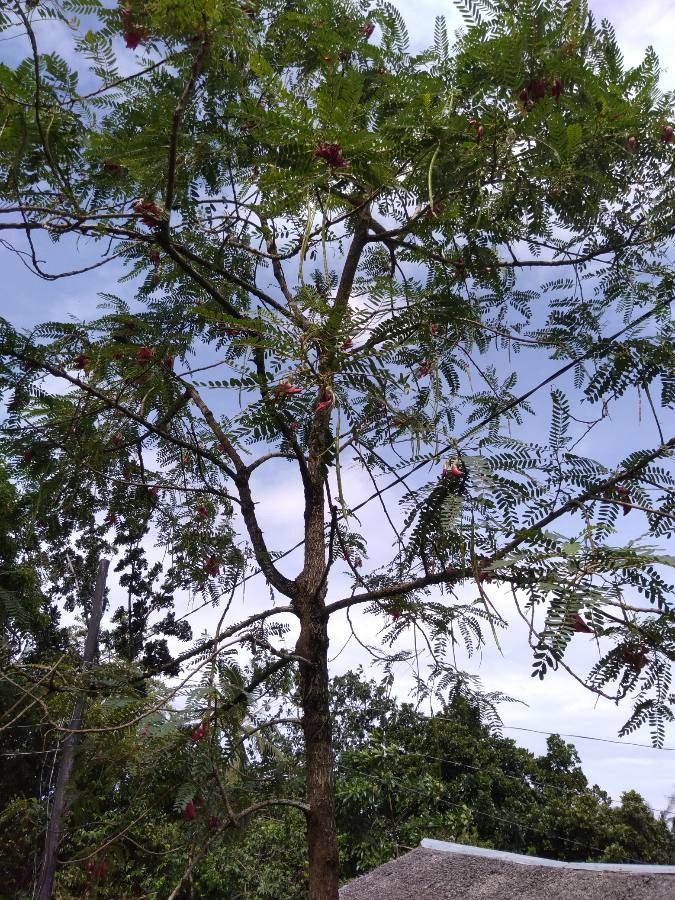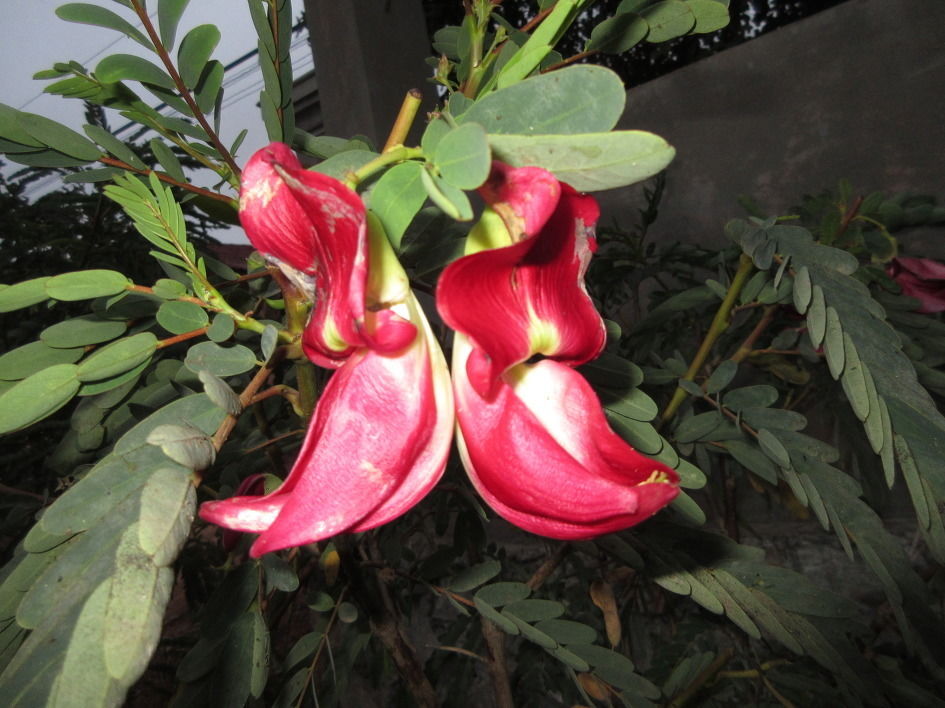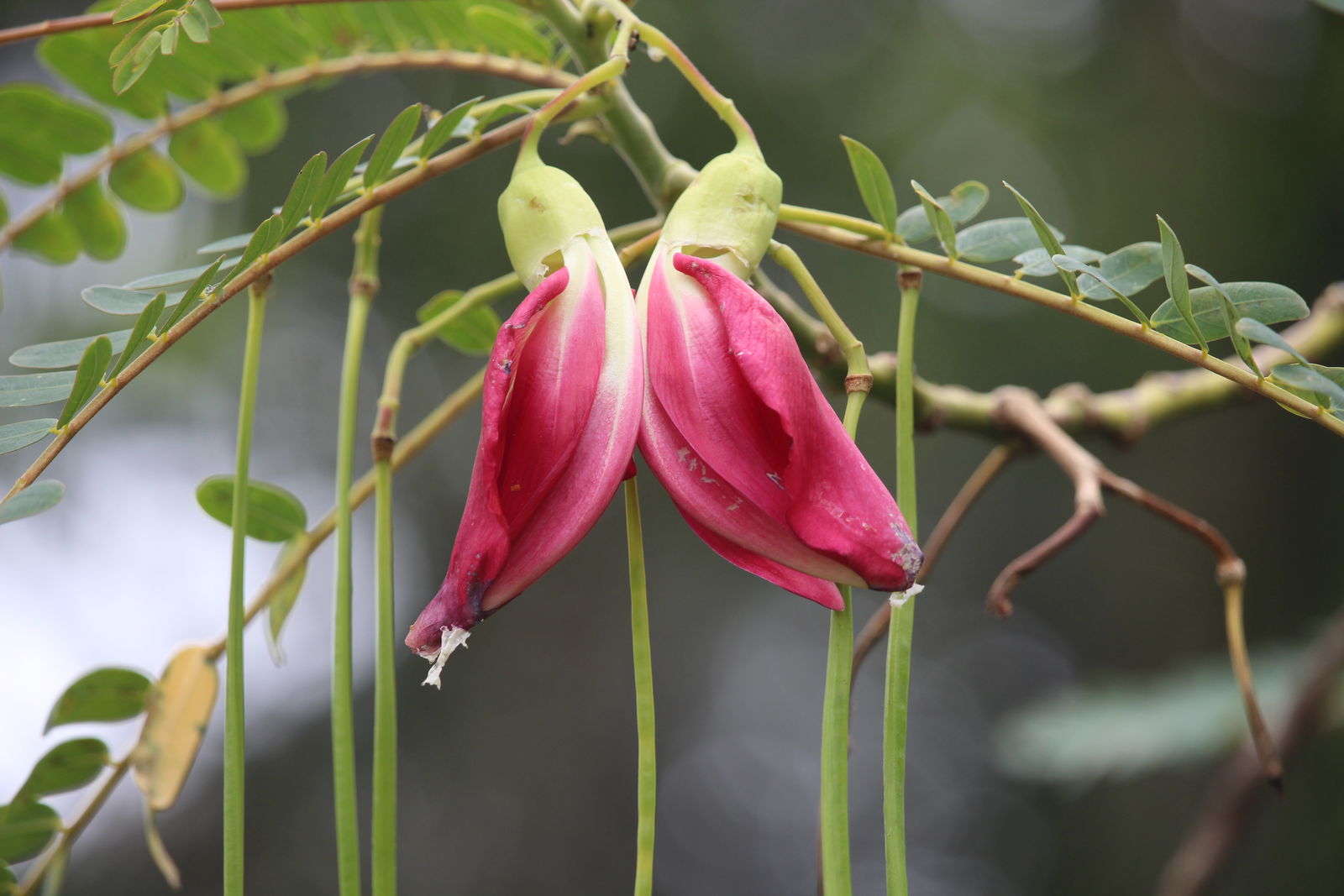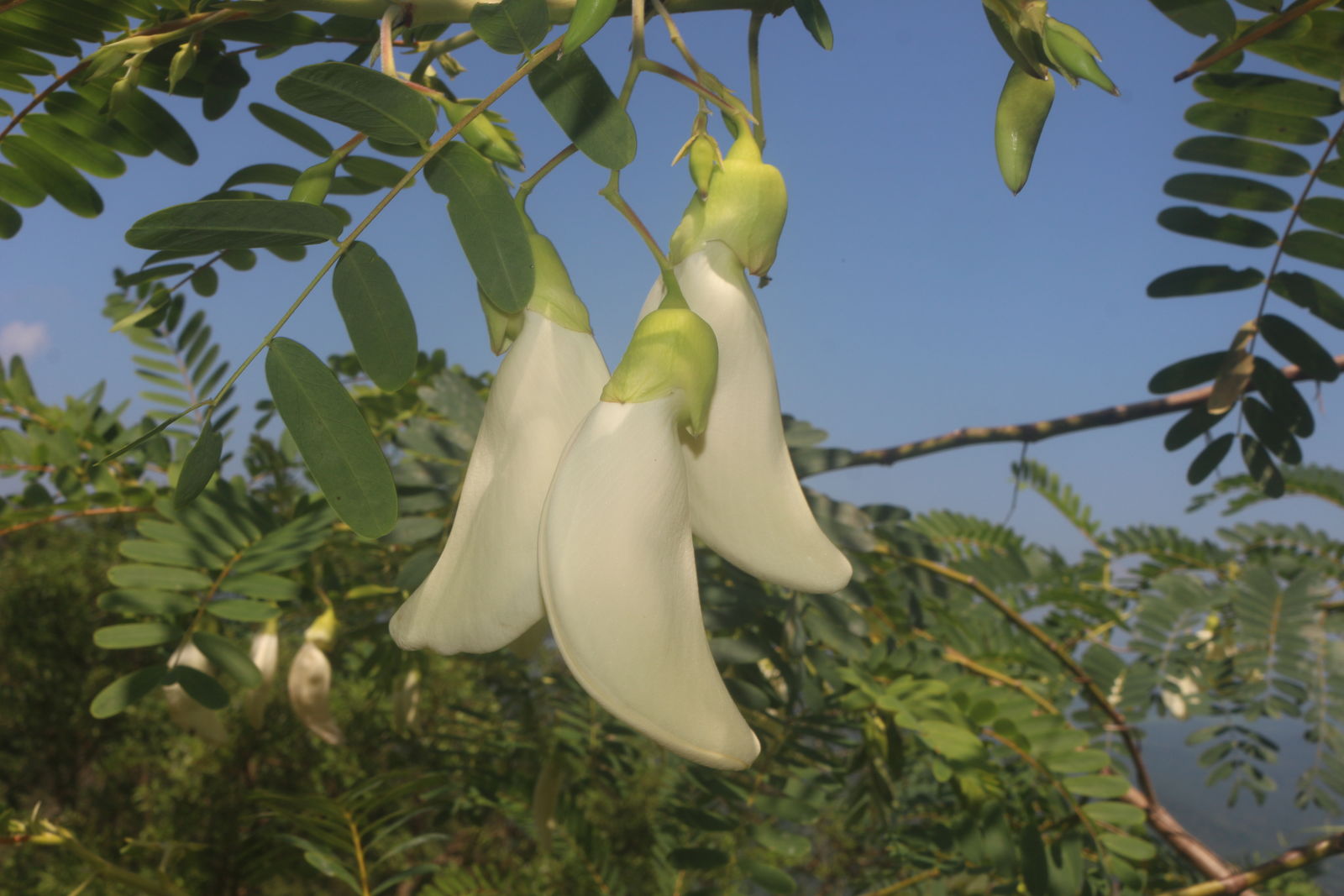Agati
sesbania grandiflora
Also known as: ["Vegetable Hummingbird","Climbing Wisteria"]
Overview
A fast-growing, deciduous tree or shrub native to Southeast Asia, known for its large, showy flowers and edible young pods.
Benefits & Perks
["edible fruits","medicinal use","aesthetic foliage","wildlife attractant (bees, butterflies, birds)","fast growing"]
Botanical Classification
| Phylum: | Magnoliophyta |
| Class: | Magnoliopsida |
| Order: | Fabales |
| Family: | Fabaceae |
| Genus: | Sesbania |
| Botanical Name: | Sesbania grandiflora |
Plant Characteristics
Basic Information
- Category: Trees
- Suitable Location: tropical garden or large container in warm, sheltered spot
- Suitable For:
- Is Weed: No
- Allergenicity: low
Environmental Needs
- Climate: {"temperatureRange":"20–35°C"}
- Hardiness: {"zones":"9–11"}
- Misting: every 2–3 days in dry climates to maintain humidity
- Drainage: Fast-draining to prevent waterlogging.
- Soil Type: Well-draining, fertile soil with organic matter; can tolerate poor soils but performs better with amendments.
Maintenance Level
- Maintenance Level: moderate
- Toughness Level: moderate
- Pruning Frequency: Light pruning can be done anytime; major pruning in late winter or early spring before new growth.
- Pruning Intensity: Moderate; remove up to one-third of growth if needed for shaping or rejuvenation.
Care Details
Ideal Sunlight Coverage:
Full sun to partial shade (4–6 hours of direct sunlight daily); tolerates light shade in hot climates.
Sunlight Tolerance Tips:
Acclimate gradually to intense sunlight; protect from harsh afternoon sun to prevent leaf scorch; adjust placement based on seasonal light intensity.
Care Requirements
Care Difficulty
easymoderate
Sunlight
full sun to partial shade
Morning sun is ideal; provide shade during peak heat; rotate plant for even growth.
Watering
every 3–5 days during active growth, reduce in winter
Water thoroughly until it drains from the bottom; allow soil to dry slightly between waterings; avoid waterlogging.
Soil
well-draining, fertile loam with organic matter
pH: Slightly acidic to neutral (pH 6.0–7.0).
Ensure good drainage; enrich with organic matter; avoid heavy clay soils.
Temperature
Thrives in warm conditions (20–30°C); prefers stable temperatures; sensitive to frost.
Protect from frost; avoid sudden temperature changes; maintain consistent warmth.
Fertilizing
every 4–6 weeks during growing season with balanced liquid fertilizer
Fertilize during active growth; avoid over-fertilizing; flush soil occasionally to prevent salt buildup.
Propagation
Methods
Stem cuttings or seeds; stem cuttings are faster and more reliable.
Step-by-Step Propagation Guide
- Take a 4–6 inch cutting.
- Remove lower leaves.
- Apply rooting hormone.
- Plant in medium.
- Keep moist and warm.
Best Time: Spring or early summer when the plant is actively growing.
Environment
Warm, humid environment with indirect light; maintain consistent moisture.
Medium
Well-draining potting mix with perlite or sand; can also root in water initially.
Hormone
Rooting hormone can be used to speed up root development.
Timeline
Roots may develop in 2–4 weeks; new growth appears in 6–8 weeks.
Tools Needed
Pruning shears, rooting hormone, small pots, well-draining medium.
Quick Tips
Use healthy, non-flowering stems; keep cuttings out of direct sun; maintain humidity for faster rooting.
Pruning & Repotting
Pruning Guide
Method
Use clean cuts just above a leaf node or branch junction; remove crossing or crowded branches.
Pruning Plan
Prune to maintain shape, encourage bushier growth, and remove dead or diseased parts.
Tools
Pruning shears, sharp knife, disinfectant.
Checklist
Disinfect tools; prune dead/diseased parts; shape the plant; remove overcrowded growth.
Repotting Guide
Best Season
Early spring before the active growing season begins.
Pot Size
Increase pot size by 2–5 cm in diameter; ensure good drainage.
Method
Remove plant gently; trim roots if necessary; place in a slightly larger pot with fresh soil; water thoroughly.
Suggestions
Repot every 2–3 years or when roots fill the pot; beneficial for growth and flowering.
Checklist
Choose appropriate pot size; prepare fresh soil mix; handle roots carefully; water after repotting.
Advanced Care Tips
Watering Mastery
Watering Checklist
Check soil moisture; water deeply; ensure drainage; adjust for season.
How to Apply Water Properly
Water directly at the root zone to avoid foliage wetting; ensure water penetrates deeply to reach roots; allow excess water to drain completely.
Watering Schedule Tips
Water deeply once the top inch of soil feels dry; reduce frequency in winter to prevent root rot; increase during hot, dry periods.
Soil Improvement
Add compost or well-rotted manure for fertility; mix in perlite or sand for drainage.
Temperature Stress Management
Signs of Temperature Issues
Wilting, leaf drop, or stunted growth in cold; scorching or leaf curl in excessive heat.
Cold Stress
Growth slows or halts; leaves may turn yellow or brown; risk of frost damage or death in prolonged cold.
Solution: Move to a warmer location; provide frost protection; avoid overwatering in cold conditions.
Hot Stress
Leaves may wilt, scorch, or drop; growth may slow; flowers may fail to develop.
Solution: Provide shade during peak heat; increase watering; ensure good air circulation.
Fertilizing Guide
Fertilizing Checklist
Use balanced fertilizer; dilute properly; fertilize during growing season; avoid winter feeding.
Fertilizing Method
Use balanced liquid fertilizer diluted to half strength every 4–6 weeks during growing season; reduce or stop in winter.
Common Problems & Solutions
Toxicity Warning
Cats
ToxicCats are highly sensitive to cyanogenic glycosides, which can cause rapid toxicity, leading to metabolic acidosis, neurological impairment, and potentially fatal respiratory failure.
⚠️ Symptoms:
🌿 Toxic Parts:
⚡ Toxic If:
if eaten
Dogs
ToxicThe cyanogenic glycosides in Sesbania grandiflora can cause severe toxicity in dogs, leading to metabolic acidosis, respiratory distress, and potential organ damage due to cyanide release.
⚠️ Symptoms:
🌿 Toxic Parts:
⚡ Toxic If:
if eaten
Humans
Slightly ToxicSesbania grandiflora contains cyanogenic glycosides, which can release cyanide when ingested in large amounts. The physiological impact includes disruption of cellular respiration, leading to potential metabolic acidosis and neurological effects.
⚠️ Symptoms:
🌿 Toxic Parts:
⚡ Toxic If:
if eaten in large quantities
Frequently Asked Questions
Q: Is Sesbania grandiflora edible?
A: Yes, its young leaves, flowers, and pods are edible and used in Southeast Asian cuisine.
Q: Does Sesbania grandiflora attract wildlife?
A: Yes, it attracts bees, butterflies, and birds due to its nectar-rich flowers.
Q: Is Sesbania grandiflora toxic to pets?
A: It is mildly toxic to dogs and cats if ingested in large quantities.
Quick Reference
| Family: | Fabaceae |
| Care: | easy |
| Light: | full sun to partial shade |
| Water: | every 3–5 days during active |
Get Expert Care Tips
Download the Plantious app for personalized care reminders and plant identification!
Google Play App Store








